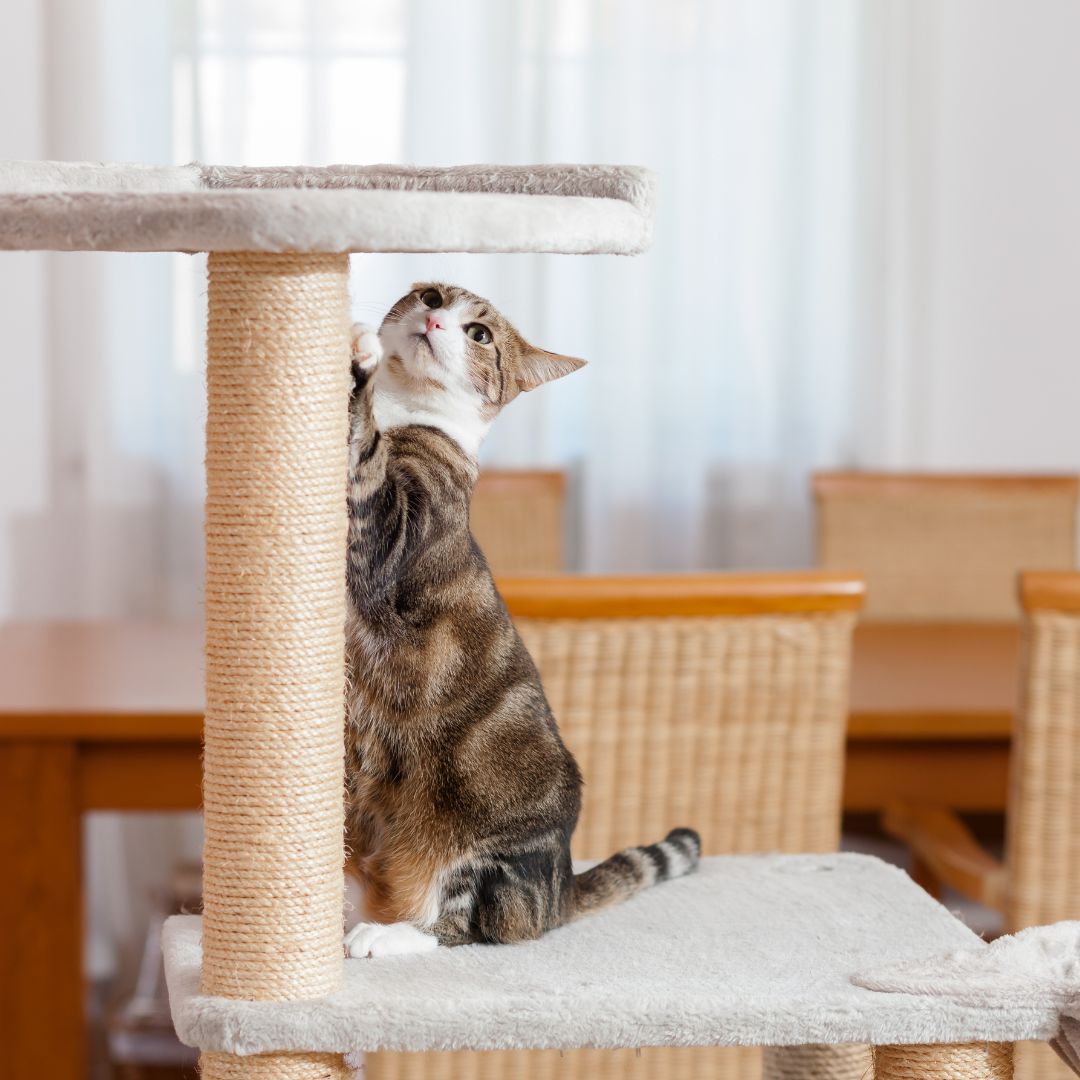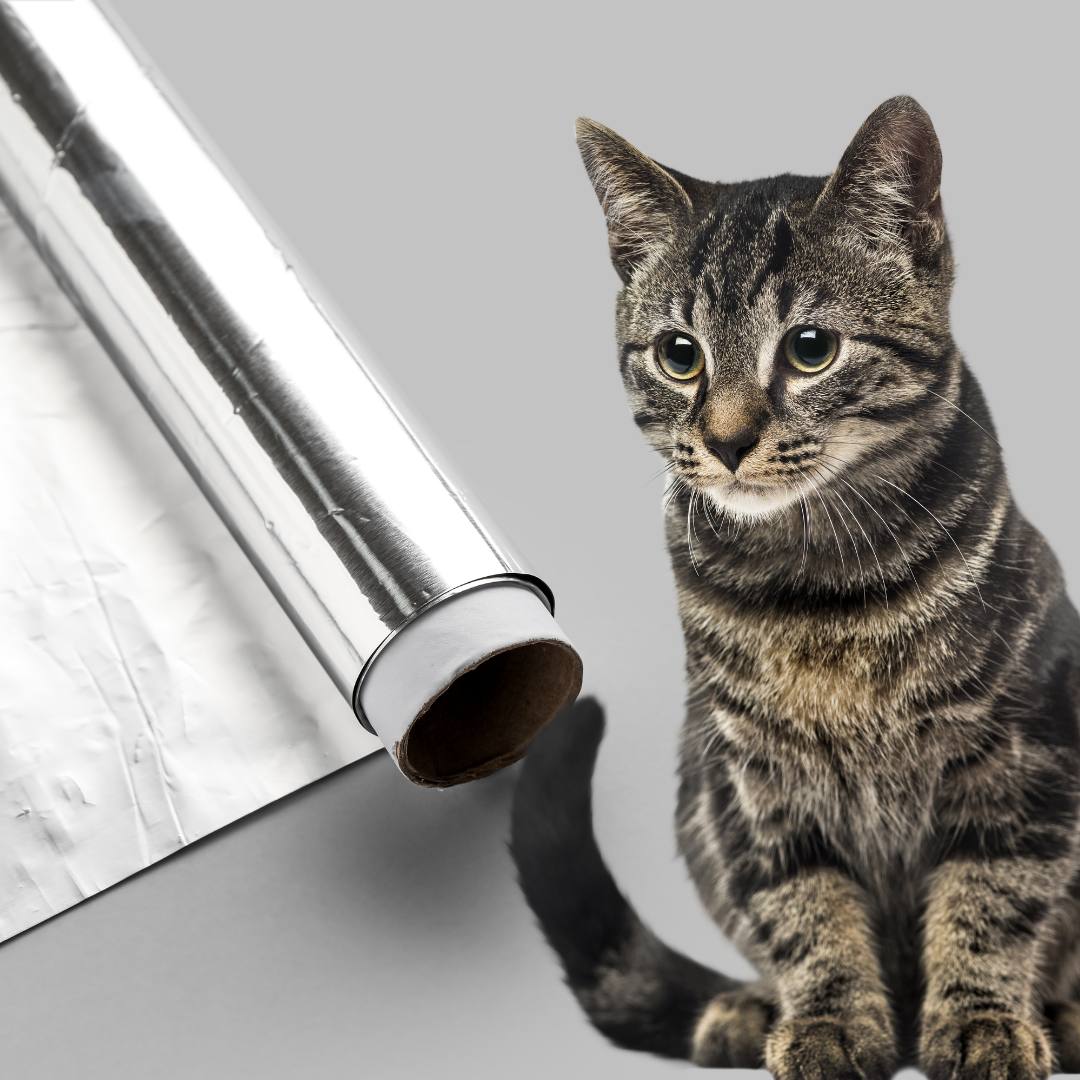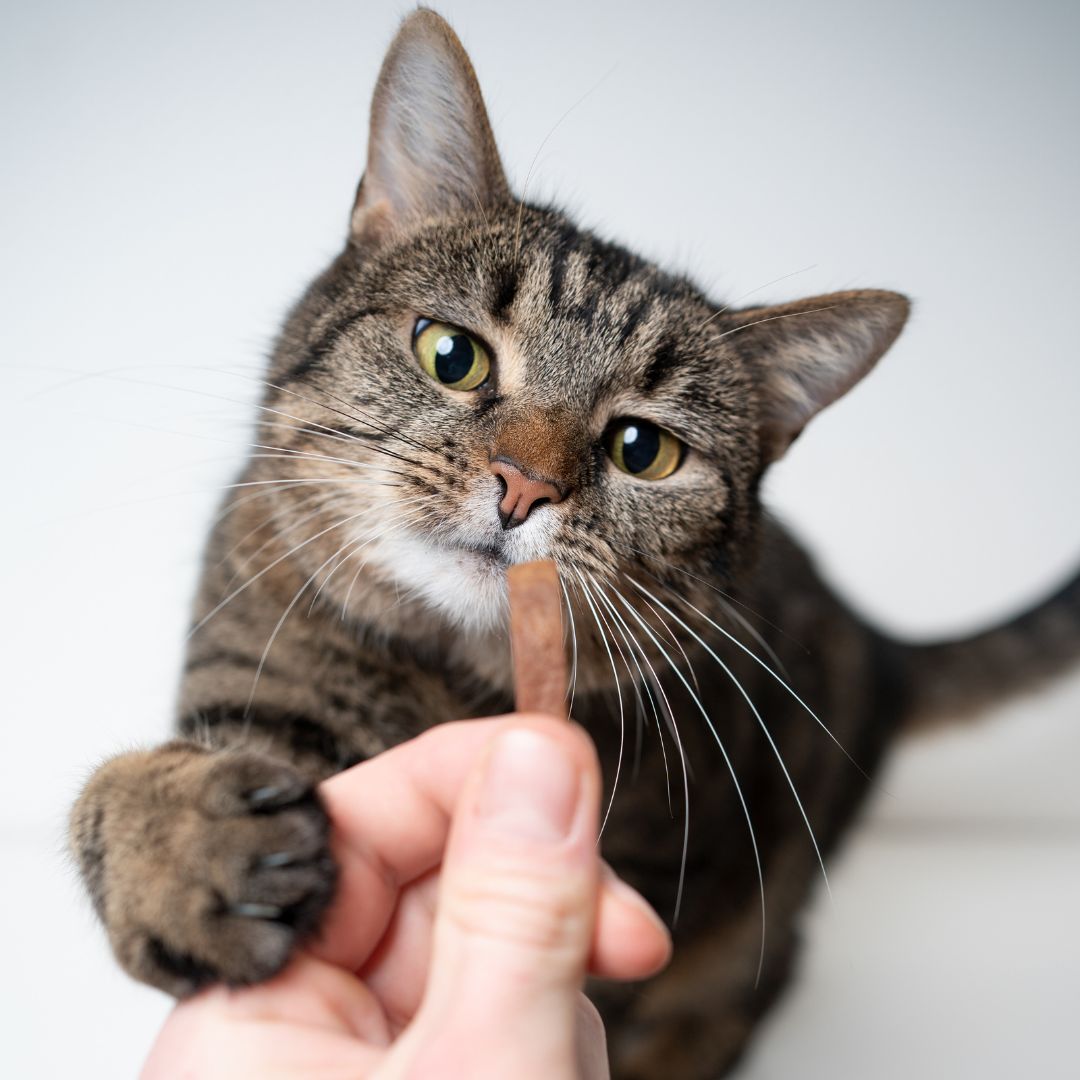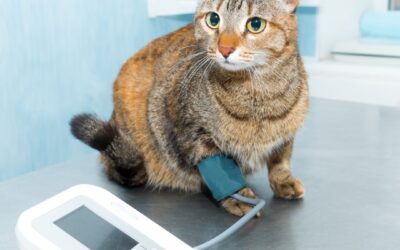Stop a cat from scratching your precious furniture by giving them acceptable options for their natural clawing behavior.
I understand you are agitated and feel helpless when you witness the terrible sight of a torn sofa cover or a constellation of minuscule punctures in your latest Gucci Leather Bag. The sight of shredded curtains, a frayed carpet, or claw marks on your antique wooden furniture can elicit a mix of emotions that range from frustration to despair.
But believe me, your cats are not doing this to avenge you or just because they are mischievous (according to you). Your cats are engaging in a behavior that is absolutely normal and necessary in the cat world.
In her book, Starting from Scratch, Pam Johnson-Bennett, a Certified Cat Behavior Consultant, writes “Cats need to scratch for claw conditioning, stretching and emotional release. Maybe your cat is scratching on furniture because he’s trying to fill a normal need and there isn’t a more acceptable option for him.”
Let us address the elephant in the room – DECLAWING CATS – before we dive into two important aspects of this article – a) studying normal cat clawing behaviors b) Steps to stop a cat from scratching furniture or anything that you cannot afford to get destroyed.
Should I Declaw My Cat?
NEVER!!! (unless its a medical necessity).
25%–43% of all cats in American homes are declawed. It happens either because vets recommend it as an easy solution or cat parents do it without questioning how declawing would affect cats, just to keep their home furniture safe. In my view, declawing a cat for a reason like stopping them from scratching furniture is downright cruel!
Declawing is a major surgery that involves amputation – removal of the last bone of each toe in a cat’s front paws.
Here are few of the many ways in which declawing impacts a cat’s life negatively:
Pain and Gait Issues
Declawing is a painful treatment that can leave cats with physical issues down the road. Each toe’s final bone being amputated can result in chronic agony, nerve damage, and an increased risk of infection. Additionally, it may cause difficulties with the healing process.
Behavioral Issues
Cats use their claws for a variety of instinctive actions, including stretching, climbing, hunting, and self-defense. Declawed cats may struggle to complete these tasks, which can cause frustration and behavioral problems. Due to the agony and discomfort of declawing, some declawed cats may grow to be aggressive or develop a dislike of the litter box.
Increased Risk of Biting
A cat’s major form of defense is its claws. Once they are removed, it increases the risk that the cat may bite to defend itself. Some declawed cats may bite in retaliation as a defensive measure. Both the cat and the person handling it may be at risk from this.
Many veterinarians and animal welfare organizations outright oppose declawing due to these worries. It is best to concentrate on alternative strategies to avoid furniture damage and deal with scratching concerns rather than thinking about declawing.
After getting declawed, cats experience the pain for several weeks. They undergo a risk of infection and behavioral problems like biting, aggression, litter box problems. And I need not shed light on the consequences these aggressive behaviors would have – would shelter home or complete abandonment be the next step?
We definitely do not want to torture our cats, thus declawing should be done only as a as a last resort, in cases where there is no other way to address a cat’s behavioral problems or to address a medical condition such as a tumor or infection in the nail bed. However, before that, proper time and consideration should be given to behavioral modification and veterinary medicine.
If declawing a cat is out of question, then how to stop a cat from scratching the furniture? Assigning a new scratching post is the simple answer. But the key lies in –
- understanding why your cats are destroying your furniture
- gradually shifting/ directing your cat’s attention from the furniture (or any object that is commonly scratched) to the new scratching post.
Cats Scratch or Claw to
Mark Their Territory
Cats use smell glands in their paws, particularly in the soft pads beneath, to mark their territory. They create visible and smelly scratches on surfaces they scratch. Other cats are given a visual cue by the marks that the area has been claimed. The smell marks contain chemicals that signal territorial ownership and are secreted by glands in their paws. Their social structure and interactions with other cats depend on this activity to help them create and maintain their territory.
Maintain Their Claws
Cats’ claws grow constantly, and scratching furniture encourages them to shed their outer coatings. Cats’ claws get sharper and healthier as the old and frayed outer layers are removed through scratching. In order to maintain their claws in top condition for activities like climbing, hunting, and self-defense, they go through this process. Their claws remain effective and sharp when needed thanks to regular scraping.
Stretch and Exercise
Cats use scratching as a way to stretch their muscles as well. A cat engages and exercises several muscle groups when it stretches and expands its body while scratching, which helps to maintain flexibility and muscle tone. They remain flexible, limber, and physically fit thanks to this full-body stretch.
3-Step Process to Stop a Cat from Scratching Furniture
Invest in a scratching post acceptable to cats (like sisal ropes)

Introduce appropriate scratching posts or boards close to the furnishings your cat frequently claws at. Sisal rope or fabric are good choices for scratching posts because they offer cats a pleasing texture to scratch. Place the posts strategically in visible areas where your cat can easily access them. Treats, catnip, or toys can be placed on the scratching posts or close by to entice your cat to utilize them. This promotes the use of the scratching posts and helps establish a good attachment with them.
Create Deterrents to Protect Your Scratched Furniture

The next step is to ensure your cat starts disliking the current object of scratching. To do so use double-sided tape, aluminum foil, or sprays with citrus scents to protect the furnishings your cat likes to scratch. Cats typically do not appreciate the crinkly feel of foil, the sticky texture of tape, or the overpowering citrus scent. Your cat will be put through an unpleasant experience thanks to these deterrents, which will reduce its propensity to scratch furnishings. Applying and replenishing these deterrents regularly will ensure that your cat eventually develops the habit of using the scratching posts instead.
Positively Reinforce Desired Behavior

The cat will be displeased to notice that its regular scratching post has been tampered with. So, it will start looking or something else to fulfil its needs. Once your cat discovers the new scratching post that it placed right next to the current one, he will try to explore it and eventually use. When you see your cat using this new post, reward their behavior by giving them whatever they like the most – it could be treats of their choice, or a massage if they love it, or a good play time. When you do the positive reinforcement technique time and again, you are sending a signal to the cat that the new scratching post is theirs and they can use it as they want.
How to Choose a New Post for Scratching Furniture?
Ensuring a pet’s comfort should be your priority. Choosing a new scratching post is a tricky task, so here are a few points you should consider while choosing a new scratching post.
Sturdiness
Choosing a scratching post that is strong and stable is important. Cats enjoy vigorous scratching, so if the post tips over easily or wobbles, they may lose interest in it or become reluctant to utilize it. Choose a post with a sturdy foundation and strong construction.
Material
Select scratching posts composed of substances that have an appealing texture for scratching. Given that cats enjoy the rough texture of tree bark, sisal rope and cloth are common options. Avoid posts with carpeted surfaces since they could cause your cat to mistake them for your carpeting and scratch it unnecessarily.
Height and Shape
Cats like to stretch out while they scratch, so pick a scratching post that enables them to do so completely. Cats often prefer vertical scratching posts, although some may also favor horizontal or tilted options. Choose a post that meets your cat’s preferences for scratching after observing their habits to identify their preferred scratching positions.
Since cats do not like change, assigning a new scratching post, things can get difficult.
Tips to Make the Switch Easier and More Fun
Provide Options
Consider placing different scratching posts around your house. By giving your cat a variety of options, you can keep them from getting frustrated or bored with a particular post. Scratching posts placed next to furnishings that your cat frequently damages might also help control their behavior.
Install An Accessible Scratching Post
Make sure that the new scratching post is close to the furniture your cat used to claw at. Since the cat is used to the old spot, he/she may not prefer a new faraway place when anxious. Another important thing to remember here is that a firm no can help your cat understand that scratching furniture is wrong and that a substitute for the same activity is available.
Use Catnip As Stress Reliever
You may make the new scratching post more appealing and lure your cat to explore and interact with it by applying catnip to it. The aroma of the catnip can pique your cat’s curiosity and natural instincts, luring them to the scratching post and encouraging them to utilize it. This can enhance the likelihood that your cat will use the post for scratching and help establish a pleasant attachment with it.
As sensitivity to catnip is a genetic feature, it’s vital to understand that not all cats react to it. You can try other methods, including putting treats or toys close to the scratching post to make it more alluring if your cat doesn’t seem to be interested in catnip. Although catnip is safe, heavy consumption can upset your cat’s stomach. Avoid giving catnip to a sick cat and if you find unusual changes in your cat’s behavior, contact a veterinarian immediately.
Concentrate on cat training, claw maintenance, and provision of a variety of suitable scratching posts. Positive reinforcement, patience, and consistency is the key.
Cheers to an Intact Furniture and a Happy Cat Scratch! ^º◡º^





0 Comments